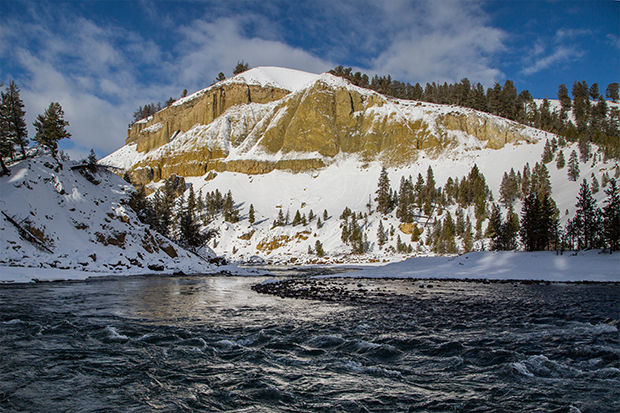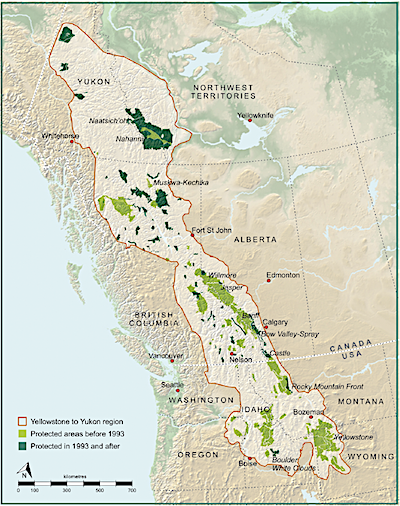Yellowstone to Yukon: How conservation has grown over 25 years
 Photo/Neal Herbert, National Parks Service
Photo/Neal Herbert, National Parks ServiceYellowstone National Park
Finding a direct connection between the Yellowstone to Yukon Conservation Initiative and its effectiveness in expanding conservation in the region has been an ever-elusive goal of environmental studies lecturer Charles Chester.
"I started my dissertation in 1997 and Yellowstone to Yukon—also known as Y2Y—was one of the main objects of study. My first goal was to answer, ’What is Y2Y doing to enhance conservation on the ground?’" Chester said. "That's how long I've been involved in this. What I’ve found is that rigorously nailing it down as a scientifically valid causal connection is almost impossible."
A new paper co-authored by Chester and seven others, however, strives to do just that. While it doesn't quite certify those connections, it does lay bare the expansion of conservation in the region and the increased awareness of the initiative since its inception.

Established in 1993, the Yellowstone to Yukon Conservation Initiative is a network and non-profit organization that aims to create a system of connected wild lands and waters stretching about 2,100 miles, from the Greater Yellowstone Ecosystem to Canada’s Yukon Territory.
The study found that the total protected area in the Y2Y region grew by 45 percent between 1993 and 2018. During that time, the Grizzly bear population doubled and more than 100 wildlife crossings were also constructed. And these gains were made at the same time that pressures on the region—from water demands and resource extraction to tourism and human infrastructure—continued to grow.
These changes coincided with a "mainstreaming" of the Yellowstone to Yukon Conservation Initiative. The initiative has collaborated with over 450 partners and has been increasingly cited in scientific literature, and in media - National Geographic, PBS and even popular TV shows like the West Wing and Grey's Anatomy. It’s also been hailed as one of the most precedent-setting “large landscape scale” conservation initiatives in the world.
Chester's part of the research assessed the “mainstreaming” of Y2Y in the conservation community and beyond. It built on his early research, which involved talking to conservationists across the Yellowstone to Yukon region to find out what the initiative means to them.
"The response I often got was, 'This connects me to a large group of people I can network with, people I can learn from, and importantly, people from whom I can raise money to support conservation,'" Chester said.
While many people think of government-protected national parks and forests when they think of conservation, much of the expansion of conservation areas happening today is by private actors.
"The key conservation work that is going on, especially in the United States, is done by non-government organizations; ranchers or land trusts," Chester said. "Those entities are key critical actors in the conservation landscape."
This loose network of private actors, along with a region that spans national borders, makes collecting comprehensive data on the area difficult. It took the team of researchers about five years to create the paper, which was published in Conservation Science and Practice in November.
While Chester still searches for ways to quantify the causal connections that can be attributed to social movements and ideas, he believes this new research clearly demonstrates that the initiative’s mission, once viewed by some as controversial, was always on the right track.
"When Y2Y entered the conversation in the early 90s, many people thought it was too extreme. Even some people who supported conservation wondered if it asked too much," Chester said. "I think our research shows that it wasn't too much, and that Y2Y turned out to be the appropriate scale for wildlife conservation."
Along with Chester, the paper was authored by Mark Hebblewhite, Jodi A. Hilty, Sara Williams, Harvey Locke, David Johns, Gregory Kehm and Wendy L. Francis.
Categories: Research





